Product Description
|
Process: |
CNC Machining, turning,milling, lathe machining, boring, grinding, drilling,broaching, stamping,etc… |
|
Surface treatment: |
Clear/color anodized; Hard anodized; Powder-coating;Sand-blasting; Painting; |
|
Nickel plating; Chrome plating; Zinc plating; Silver/gold plating; |
|
|
Black oxide coating, Polishing etc… |
|
|
Gerenal Tolerance:(+/-mm) |
Gear grade :7Gread (ISO) |
|
Run Out:0.005mm |
|
|
Roundness:0.001mm |
|
|
ID/OD Grinding: 0.002 |
|
|
Roughness : Ra 0.05 Rz 0.2 |
|
|
Certification: |
IATF 16949, ISO140001 |
|
Experience: |
16 years of machining products |
|
Packaging : |
Standard: carton with plastic bag protecting |
|
For large quantity: pallet or wooden box as required |
|
|
Lead time : |
In general:30-60days |
|
Term of Payment: |
T/T, L/C |
|
Minimum Order: |
Comply with customer’s demand |
|
Delivery way: |
Express(DHL,Fedex, UPS,TNT,EMS), By Sea, By air, or as required |
ZheZheJiang nlead Precision Co., Ltd. which focuses on CNC machining, including milling, turning, auto-lathe turning,holing,grinding, heat treatment from raw materials of bars, tube, extruded profiles, blanks of cold forging & hot forging, aluminum die casting.
We provide one-stop service, from professional design analysis, to free quote, fast prototype, IATF16949 & ISO14001 standard manufacturing, to safe shipping and great after-sales services.During 16 years, we have win lots of trust in the global market, most of them come from North America and Europe.
Now you may have steady customers, and hope you can keep us in the archives to get more market news.
Sunlead produce all kinds of machining parts according to customer’s drawing, we can produces stainless steel Turned parts,carbon steel Turned parts, aluminum turned parts,brass & copper turned parts.
Please feel free to send inquiry to us, and our professional sales manager will get back to you ASAP!
FAQ:
Q1: How can I get the samples?
A: If you need some samples to test, you should pay for the transportation freight of samples and our samples cost.
Q2: Can we have our marking,Logo or company name to be printed on your products or package?
A: Sure. Your marking,logo,or company name can be put on your products by Laser machine
Q3: How to order?
A: Please send us your purchase order by Email, or you can ask us to send you a Performa invoice for your order. We need to know the following information for your order.
1) Product information-Quantity, Specification ( Size, Material, Technological and Packing requirements etc.)
2) Delivery time required
3) Shipping information-Company name, Street address, Phone&Fax number, Destination sea port.
4) Forwarder’s contact details if there’s any in China.
Q4: When can you get the price?
We usually quote within 48 hours after we get your inquiry. If you are very urgent to get the price, please call us or tell us in your email so that we will regard your inquiry priority. Kindly note that if your inquiry is with more details then the price we quote will be more accurate.
Q5: How can you get a sample to check our quality?
After price confirmation, you can require for samples to check our quality.
Q6: What kind of files do we accept for drawing?
A: PDF, CAD,STP,STEP
Q7: What about the lead time for mass production?
Honestly, it depends on the order quantity and the season you place the order. Generally speaking,it would need about 30-60days to finish the sample.
Q8: What is our terms of delivery?
We accept EXW, FOB, CFR, CIF, DDU, DDP, etc. You can choose the 1 which is the most convenient or cost effective for you.
| Application: | Motor, Electric Cars, Motorcycle, Machinery, Marine, Agricultural Machinery, Car |
|---|---|
| Hardness: | Hardened Tooth Surface |
| Gear Position: | Internal Gear |
| Manufacturing Method: | as Requiried |
| Toothed Portion Shape: | as Requiried |
| Material: | Stainless Steel |
| Customization: |
Available
| Customized Request |
|---|
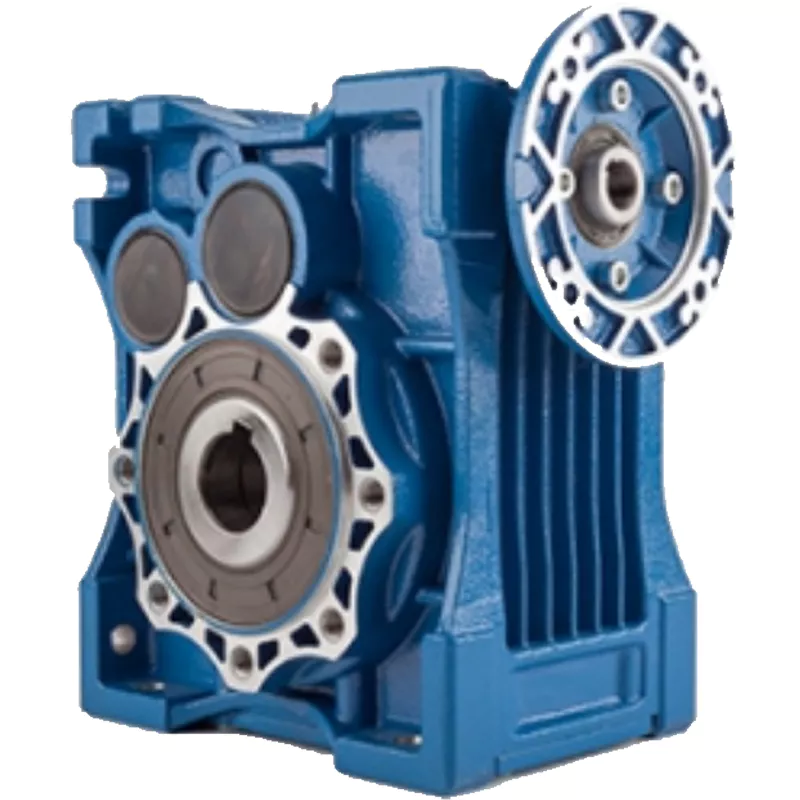
Comparison of Helical Gearboxes and Bevel Gearboxes
Helical gearboxes and bevel gearboxes are both widely used for power transmission in various industrial applications. Here’s a comparison of their performance:
- Gear Meshing: Helical gearboxes use helical gears with inclined teeth that gradually engage, resulting in smoother and quieter operation compared to the more abrupt engagement of straight-cut bevel gears.
- Efficiency: Helical gearboxes generally offer higher efficiency due to their helical gear design, which distributes loads evenly across the teeth. Bevel gearboxes can have slightly lower efficiency due to the sliding action of gear teeth during engagement.
- Load Capacity: Helical gearboxes can handle higher loads and torque due to the larger contact area of the gear teeth. Bevel gearboxes are suitable for moderate loads and applications where the direction of power transmission needs to be changed.
- Space Efficiency: Bevel gearboxes are often more compact and suitable for applications where space is limited and a change in direction is required. Helical gearboxes may require more space due to the parallel shaft arrangement.
- Noise and Vibration: Helical gearboxes generate less noise and vibration compared to straight-cut bevel gearboxes. Bevel gearboxes can be noisier, especially at higher speeds.
- Application: Helical gearboxes are commonly used in applications requiring smooth and efficient power transmission, such as conveyors, pumps, and mixers. Bevel gearboxes are preferred for applications where changes in direction are necessary, such as in automotive differentials and printing presses.
Ultimately, the choice between helical and bevel gearboxes depends on the specific requirements of the application, including load capacity, space constraints, efficiency goals, and the need for directional changes in power transmission.
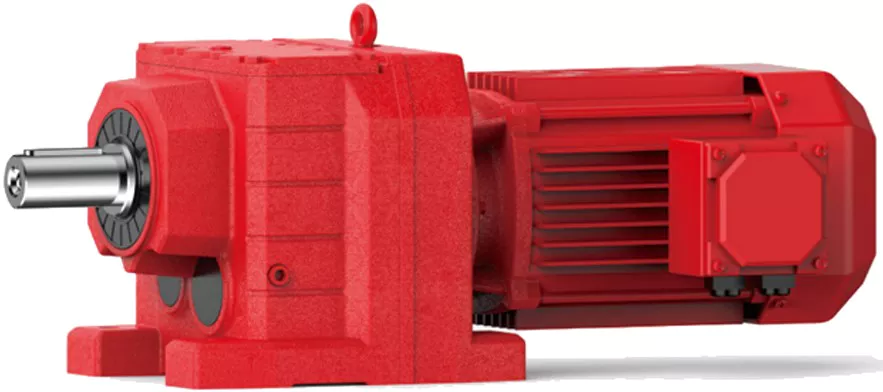
Software Tools for Simulating Helical Gear Behavior
Several software tools are available for simulating the behavior of helical gears under different conditions. These tools aid engineers in designing and analyzing helical gear systems for optimal performance and reliability. Some notable software tools include:
- KISSsoft: KISSsoft is a widely used software for the design and analysis of mechanical components, including helical gears. It offers comprehensive calculations for gear geometry, load distribution, contact stresses, and more. The software assists in optimizing gear designs and predicting their behavior under various operating conditions.
- AGMA Rating Suite: The American Gear Manufacturers Association (AGMA) offers software tools that follow AGMA standards for gear design and analysis. These tools provide accurate calculations for gear rating, efficiency, and durability under different load scenarios.
- ANSYS Mechanical: ANSYS Mechanical is a versatile simulation software used for finite element analysis (FEA) of mechanical systems, including helical gears. It allows engineers to perform detailed stress and deformation analysis, simulate contact patterns, and assess the effects of different loads and boundary conditions.
- Gleason CAGE: Gleason’s Computer-Aided Gear Engineering (CAGE) software specializes in gear design and optimization. It offers advanced tools for gear tooth profile generation, simulation of meshing behavior, and optimization of gear parameters.
- MAGMA Soft: MAGMA Soft provides casting simulation software that can be used to predict the solidification behavior and mechanical properties of casted gear components, which is essential for ensuring quality and performance.
- Siemens NX: Siemens NX software includes gear design and analysis capabilities, allowing engineers to simulate gear behavior, calculate load distribution, and optimize gear designs within a comprehensive CAD/CAE environment.
These software tools enable engineers to model and analyze helical gears in a virtual environment, helping them make informed design decisions, optimize gear geometry, and assess gear performance under different conditions. By utilizing these tools, engineers can create reliable and efficient helical gear systems for various industrial applications.

Helical Gearbox: Overview and Working Mechanism
A helical gearbox is a type of mechanical device used to transmit power and motion between rotating shafts. It employs helical gears, which are cylindrical gears with teeth that are cut at an angle to the gear axis. This design feature gives helical gearboxes their distinctive helical shape and provides several advantages in terms of efficiency, smoothness, and load-bearing capabilities.
The working mechanism of a helical gearbox involves the interaction of helical gears, which mesh together to transmit torque and motion. Here’s how it works:
- Gear Tooth Engagement: When power is applied to the input shaft of the gearbox, the helical gear on the input shaft meshes with the helical gear on the output shaft.
- Helical Angle: The helical angle of the gear teeth causes a gradual engagement between the teeth, resulting in a smooth and quiet meshing process compared to straight-cut gears.
- Torque Transfer: As the input gear rotates, it transfers rotational force (torque) to the output gear through the meshing of their helical teeth.
- Direction of Rotation: Depending on the arrangement of the helical gears, the output shaft’s direction of rotation can be the same as or opposite to that of the input shaft.
- Load Distribution: The helical design allows for multiple teeth to be engaged at any given moment, distributing the load more evenly across the gears. This results in higher load-carrying capacity and reduced wear on gear teeth.
- Efficiency: Helical gearboxes are known for their high efficiency due to the gradual tooth engagement and larger contact area, resulting in minimal energy loss as compared to other gear types.
Helical gearboxes find applications in various industries where smooth operation, high efficiency, and compact design are important. They are commonly used in machinery, conveyors, automotive transmissions, industrial equipment, and more.


editor by CX 2023-09-28
China wholesaler Reducer Spiral Bevel Helical Speed Reduction Agriculture Agricultural Cycloidal Servo High Precision Planetary Winch Track Wheel Slewing Drive Nmrv Worm Gearbox wholesaler
Product Description
Reducer Spiral Bevel Helical Speed Reduction Agriculture Agricultural Cycloidal Servo High Precision Planetary Winch Track Wheel Slewing Drive Nmrv Worm Gearbox
Our products
Worm gearbox: RV series, WP series, SWL series screw jack, VF series
Helical gearbox: R/F/K/S series, HB series, BKM series, RC series, SMR shaft mounted gearbox, TA shaft mounted gearbox
Cycloidal gearboxes: BL/XL flange vertical installed double shaft type, BW/XW baseboard horizontal installed double shaft type, BLD/XLD flange vertical installed motor direct-connection type, BWD/XWD baseboard horizontal installed motor direct-connection type
Planetary gearbox: High precision planetary gearboxes, Planetary gearbox for feed mixer, Planetary gearbox for construction mixer, Travel drives, Winch drives, Slew drives, Inline gear reducer
Agricultural gearbox: Planetary gearbox for feed mixer, Flail Mower Gearbox, Rotary Tiller Gearbox, Lawn Mower Gearbox, rotary cutter gearbox, post hole gearbox, rotary mower gearbox, irrigation gearbox, fertilizer spreader gearbox, hydraulic drive gearbox, rotary rakes gearbox, hay tedders gearbox, sewage agitators gearbox, cutter bars gearbox, snowblower gearbox…
Our Advantages
–Box processing accuracy assurance
Large horizontal box machining center
High-end fully automatic multi-axis CNC boring and milling machine
Fully CNC high-precision processing ensures the accuracy of hole location
–Fourth level precision of precision gear grinding
The tooth surface is carburized and hardened, which is durable
Fine rolling and grinding process, high efficiency, stable and low noise
–Automatic numerical control workshop
Standardized CNC production workshop
Pass the ISO9001 quality system certification
Efficient operation to ensure production duration
–Diversified configuration and matching as required
It can be equipped with common three-phase/single-phase, braking, frequency conversion, explosion-proof, servo, and other motors.
Different motor voltage/frequency, protection grade, and energy efficiency grade can be configured.
Customizable input end cover matching non-standard power input device
–Automatic painting assembly line
Fully automatic painting assembly line
Ensure both internal and external products
Exquisite appearance and brand expression
–Rich customization design capability
Design technology team with more than 20 years of experience
Can undertake customization of various non-standard reducers
Company Profile
The company specializes in producing worm gearboxes (reducers), agricultural gearboxes, planetary gearboxes, helical gearboxes, swl series screw gearboxes, R, K, F, S series helical gear reducers, B/X series cycloidal pin gear reducers, etc. The products are exported to dozens of countries and regions in Europe, America, Japan, India, Brazil, etc. The products are mainly used in plastics, rubber, metallurgy and mining, petrochemical industry, hoisting and transportation, light industrial food, and other fields.
The company has exact and sensitive equipment, challenging tooth surface processing, and manufacturing equipment: German and Swiss gear grinders, gear testers, hobbing machines, large boring and milling machines, Japanese machining centers, etc.
More than 20 projects, such as the high torque reducer developed by the company, have won the national patent invention certificate and also won the national “high-tech enterprise certificate” in 2571.
Since its establishment in 2003, the company has adhered to the concept of “sustainable operation,” the business philosophy of “people-oriented, customer first,” and the core values of “unity, friendship, dedication, innovation, and efficiency.” The company keeps up with the cutting-edge technology in the market and strives to create the most satisfactory products for customers!
Product processing flow
Box processing process
Mechanical modeling of metal mold → casting on production line → artificial aging treatment → shot peening treatment → machining center processing → CMM detection
Gear processing process
Forging → normalizing → rough turning → fine turning → gear hobbing → chamfering of tooth end → carburizing and quenching (HRC58-62) → shot blasting → grinding of the end face and inner hole → gear grinding → accuracy testing (tooth shape, tooth orientation, tooth pitch, etc., level 6) → wire cutting keyway → magnetic particle flaw detection → ultrasonic cleaning and rust prevention.
Process flow of gear shaft processing
Forging → normalizing → rough turning (including center hole drilling) → finish turning → gear hobbing → keyway milling → carburizing and quenching (HRC58-62) → shot blasting → grinding center hole → excircle grinding → gear grinding → testing (tooth shape, tooth pitch, etc., level 6) → magnetic particle inspection → ultrasonic cleaning and rust prevention.
Certifications
Packaging & Shipping
How to select reducer
To determine the model of a reducer, the following parameters need to be determined:
1. Determine the running speed of the machine, and calculate the reduction ratio of the reducer according to this speed (reduction ratio=input shaft speed/output shaft speed=motor speed/mechanical required speed);
2. Calculate the load torque, select the output of the reducer according to this torque (refer to the “Output Torque Table” provided by the reducer manufacturer), and determine the reducer model;
3. Determine the additional functions of the reducer, such as power off braking, power on braking, frequency conversion, shrink frame, housing material, etc. Some additional functions can only be provided by specific factories.
| Application: | Motor, Electric Cars, Motorcycle, Machinery, Marine, Toy, Agricultural Machinery, Car |
|---|---|
| Layout: | Coaxial |
| Hardness: | Soft Tooth Surface |
| Step: | Stepless |
| Transport Package: | Wooden Box |
| Specification: | Customize |
| Samples: |
US$ 9999/Piece
1 Piece(Min.Order) | |
|---|
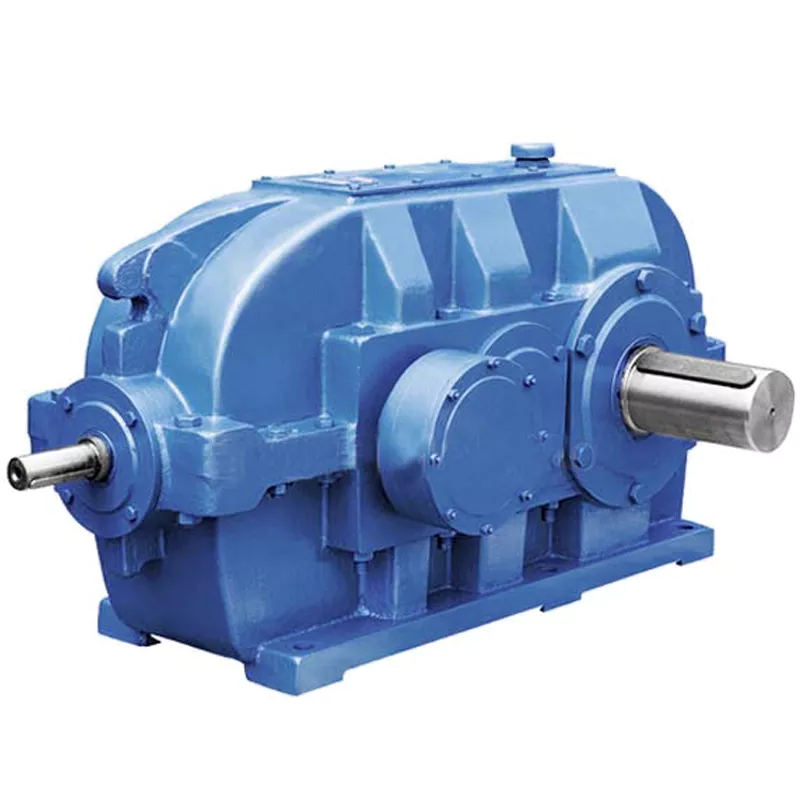
Limitations and Disadvantages of Helical Gear Systems
While helical gear systems offer numerous advantages, they also come with certain limitations and disadvantages:
- Axial Thrust: Helical gears generate axial thrust due to the helix angle of the teeth. This thrust can cause additional load on bearings and may require additional measures to counteract.
- Complex Manufacturing: The manufacturing process for helical gears is more complex than that of straight-toothed gears, which can lead to higher production costs.
- Axial Length: Helical gears require more axial space compared to spur gears with the same gear ratio. This can be a limitation in applications with space constraints.
- Sliding Contact: Helical gears have sliding cont
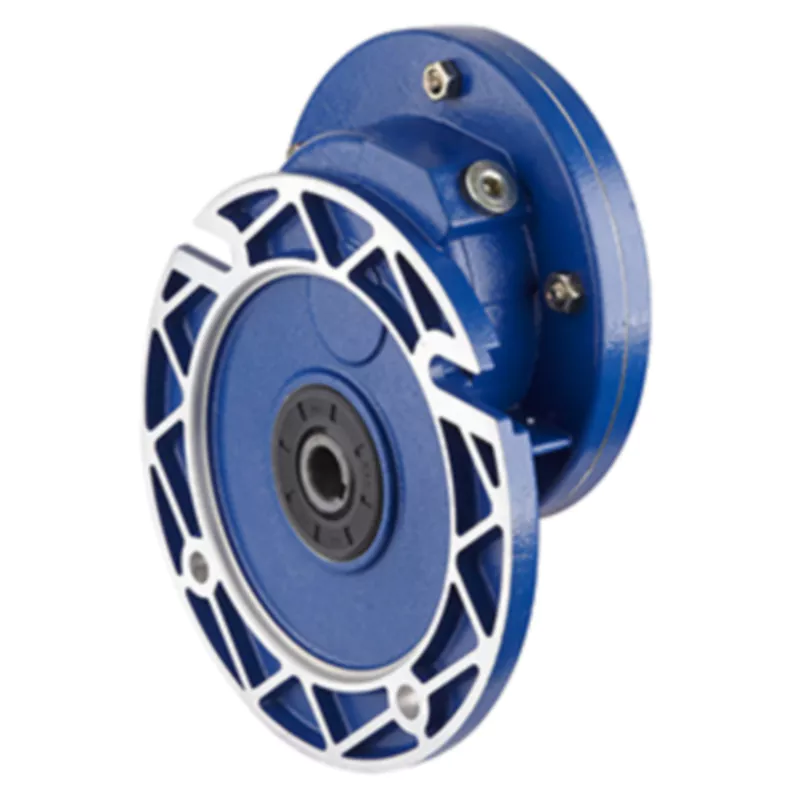
Impact of Thermal Expansion on Helical Gearbox Performance
Thermal expansion can significantly affect the performance of helical gearboxes due to changes in dimensions and clearances caused by temperature variations. Here’s how it impacts:
1. Misalignment: Temperature changes can lead to differential expansion of gearbox components. This can result in misalignment of gears, shafts, and bearings, leading to increased friction, noise, and reduced efficiency.
2. Lubrication: Thermal expansion can alter the clearances within the gearbox, affecting the distribution and viscosity of the lubricating oil. Inadequate lubrication due to temperature-induced changes can result in
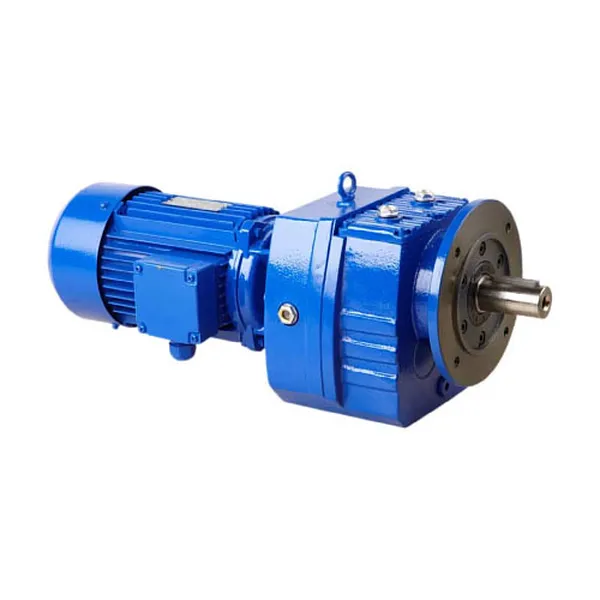
Maintenance Tips to Prolong the Lifespan of Helical Gearboxes
Proper maintenance is essential to ensure the longevity and optimal performance of helical gearboxes. Here are some maintenance tips:
- Regular Inspections: Conduct routine visual inspections to check for any signs of wear, damage, or oil leakage. Detecting issues early can prevent further damage.
- Lubrication: Follow the manufacturer’s recommendations for lubrication intervals and use the correct type of lubricant. Proper lubrication reduces friction and wear between gear teeth.
- Cleanliness: Keep the gearbox environment clean and free from contaminants that could enter the gearbox and affect its performance.
- Tighten Fasteners: Check and tighten any loose fasteners or mounting bolts to ensure the gearbox remains securely in place.
- Alignment: Properly align the gearbox with connected equipment to prevent excessive loads and wear on the gear teeth.
- Temperature Monitoring: Monitor the operating temperature of the gearbox. Excessive heat can lead to premature wear and reduced efficiency.
- Vibration Analysis: Regularly analyze gearbox vibration levels to detect any unusual vibrations that might indicate issues with gear meshing or other components.
- Seal Integrity: Ensure that seals and gaskets are in good condition to prevent oil leakage and contamination.
- Load Considerations: Avoid overloading the gearbox beyond its specified capacity. High loads can accelerate wear and damage.
By following these maintenance practices, you can extend the lifespan of helical gearboxes and minimize the risk of unexpected failures. Regular maintenance not only reduces downtime and repair costs but also contributes to the efficient and reliable operation of equipment.
increased wear and premature failure.
3. Gear Tooth Engagement: Temperature fluctuations can cause gear teeth to expand or contract, affecting the meshing engagement and load distribution. Inconsistent gear tooth contact can lead to uneven wear and reduced gear life.
4. Bearing Performance: Bearings in helical gearboxes are sensitive to temperature changes. Excessive heat can lead to reduced bearing life, increased friction, and potential seizure, affecting overall gearbox performance.
5. Noise and Vibration: Thermal expansion can lead to changes in gear and component clearances, resulting in altered vibration patterns and increased noise levels. This can impact the comfort of the system and indicate potential issues.
6. Material Fatigue: Repeated cycles of thermal expansion and contraction can lead to material fatigue and stress accumulation, reducing the overall lifespan of gearbox components.
Managing Thermal Effects: Manufacturers design helical gearboxes with considerations for thermal expansion, using materials with low coefficients of thermal expansion and incorporating features like expansion joints or thermal isolators. Proper lubrication, monitoring temperature, and maintaining consistent operating conditions are also crucial in mitigating thermal expansion effects.
Understanding and managing the impact of thermal expansion is essential to maintain the performance, efficiency, and durability of helical gearboxes.
act between their teeth, which can result in higher friction and more heat generation compared to rolling contact gears.
- Efficiency: Although helical gears are generally efficient, their efficiency can be slightly lower than that of some other gear types, especially at high speeds.
- Complexity in Gearbox Design: The inclination of helical gear teeth introduces additional complexity in gearbox design and alignment.
- Reverse Thrust: In some cases, reverse thrust can occur when helical gears are subjected to high axial loads, leading to undesirable effects.
It’s important to consider these limitations and disadvantages when selecting gear systems for specific applications. Despite these challenges, helical gears remain a popular choice in various industries due to their benefits and overall performance characteristics.


editor by CX 2023-08-16
China wholesaler Ctu Planetary Gearbox Track Drive Replacement of CZPT Riduttori Ctu3150 Ctu3200 Ctu3300 Ctu3500 Ctu3700 with Great quality
Item Description
Solution Description
CTU Planetary Gearbox Keep track of Push Alternative of CZPT Riduttori CTU3150 CTU3200 CTU3300 CTU3500 CTU3700
CTU planetary transmission monitor push solution info
Brevini riduttori electrical power transmission compact planetary keep track of transmission is designed for Tracked Autos: excavators and earth transferring machinery.
They have heavier housings, shorter all round lengths, and increased radial and axial load capacity.
They have an built-in multi disc are unsuccessful risk-free brake, which can be immediately put in on the hydraulic motor, and are completely ready to acknowledge the plug-in hydraulic motor.
The compact design of the gadget allows electricity to be transmitted immediately from the CZPT axial piston hydraulic motor to the working device, therefore minimizing the general dimensions of the hydrostatic transmission.
High radial load capacity, particular sealing system and guide separation permit the final drive to operate below severe and heavy load conditions.
The inner multi disc parking brake, movement management valve and smooth displacement variability supplied by CZPT hydraulic motor are additional advantages, enabling Dana to provide a total, dependable and integrated transmission kit as a partner.
Honesty and credit history + great and economical + enthusiastic services + diligent
Founded in 1998, xufang hydraulic has been devoted to the product sales of hydraulic components since its institution.”Honesty and credit score” is constantly the fulcrum of the improvement of the company, with great credit history, a wide range of shopping channels, so that the organization and the vast majority of the servicing enterprise to establish a good connection of cooperation.
Xufang hydraulic on the foundation of the most affordable cost, honesty as the theory, do our ideal to offer the most outstanding hydraulic elements for the bulk of maintainers.We believe that with far more sweat, will spend out tomorrow’s wonderful.
Spot provide crane, excavator, cement mixing tank, vibration roller, paver and other development machinery for the primary oil pump, motor, reducer, engine, gear ring, hydraulic cylinder and other hydraulic tools.
Honesty and credit score + good and inexpensive + enthusiastic support + diligent
Sales:
Location provide crane, excavator, cement mixing tank, vibration roller, paver and other development equipment for the primary oil pump, motor, reducer, engine, equipment ring, hydraulic cylinder and other hydraulic gear
Hydraulic pumps: Rexroth, Saaosang Strante, Uchida, Kawasaki, Gateng, Tadano, Hitachi, Vickers, Parker, HARVEY, Toshiba, KYB, and so forth
Velocity reducer: cement mixing tank (KYB, SAO, DAKIN, HangZhou)
Domestic inclined shaft variety piston pump: A2F, A6V, A7V, A8V wholesale numerous measurements of hydraulic cylinders
A massive amount of utilized dismantled elements (hydraulic pump, motor, motor, reducer, equipment ring and other dismantled areas)
- WHAT IS OUR Principal Software?
A:Oil hydraulic pump,Reduction box,Hydraulic motor, Gear ring,Hydraulic cylinder,
Hydraulic equipment.
2,Q : WHY WE Get FROM XUFANG HYDRAULIC?
A : No 1 can match our commitment to top quality. honesty and benefit.
* Seasoned hydraulic pump authorities,seasoned customer services, seasoned specialists committed to their function, procedure every single and every buy.
* Each buy is carefully inspected ahead of it leaves our facility. Elements are matched to oem specifica-tions, and models are entirely tested to circulation, strain, and torque.
* We realize that every single purchase placed, is critical. We promise to ship the correct element, the initial time, on time as promised.
3,Q: MY Components DlD NOT Demonstrate UP IN YOUR Lookup BAR, CAN YOU Source IT?
A : More Than Most likely! Although we try to maintain as numerous on the web objects as attainable, hundreds of thou-sands of merchandise are not listed on the internet.
4,Q: WHAT ARE THE TERMS OF PAYMENT?
A: *Complete order: 30% as progress payment for the purchase, stability to be compensated off before shipment. * Small purchase/sample purchase/upkeep get: full payment in progress.
What Is a Gearbox?
There are several factors to consider when choosing a gearbox. Backlash, for example, is a consideration, as it is the angle at which the output shaft can rotate without the input shaft moving. While this isn’t necessary in applications without load reversals, it is important for precision applications involving load reversals. Examples of these applications include automation and robotics. If backlash is a concern, you may want to look at other factors, such as the number of teeth in each gear.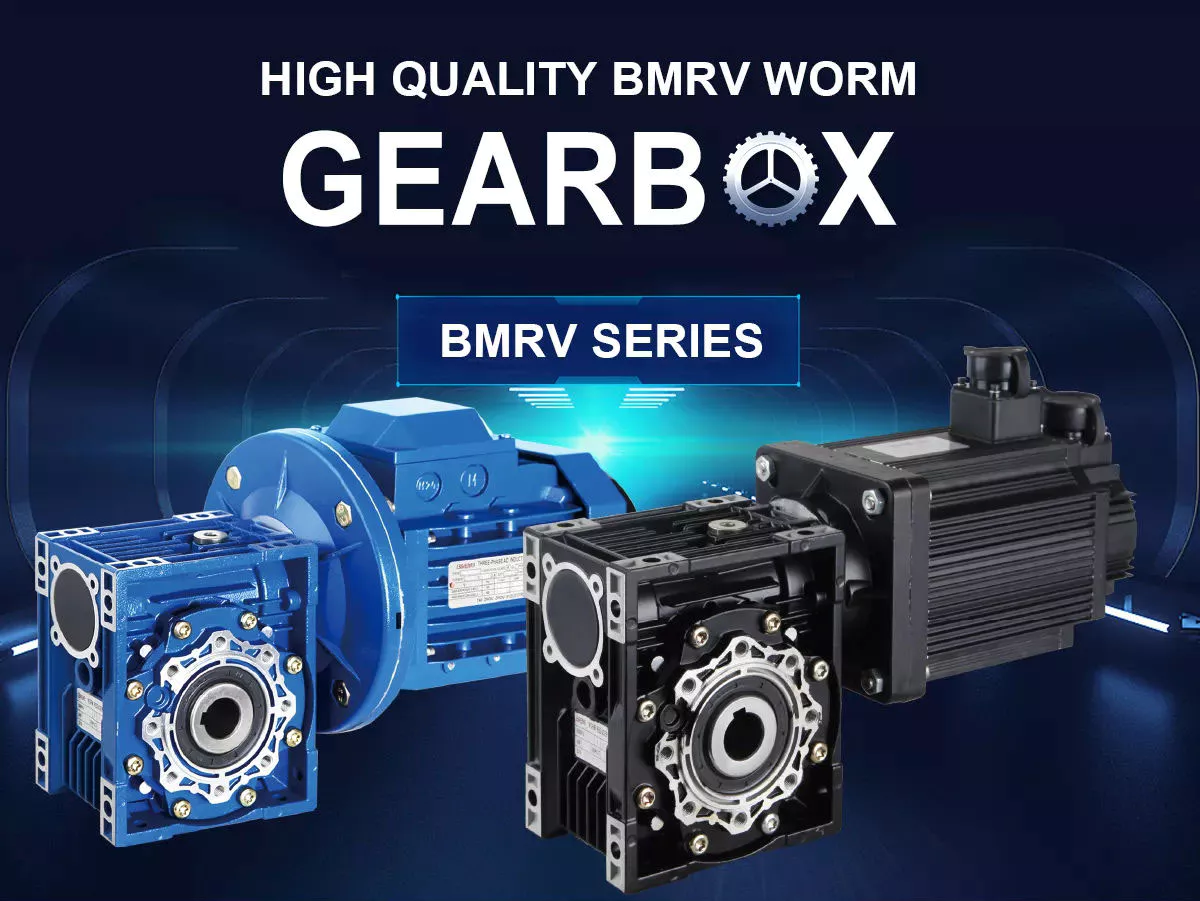
Function of a gearbox
A gearbox is a mechanical unit that consists of a chain or set of gears. The gears are mounted on a shaft and are supported by rolling element bearings. These devices alter the speed or torque of the machine they are used in. Gearboxes can be used for a wide variety of applications. Here are some examples of how gearboxes function. Read on to discover more about the gears that make up a gearbox.
Regardless of the type of transmission, most gearboxes are equipped with a secondary gear and a primary one. While the gear ratios are the same for both the primary and secondary transmission, the gearboxes may differ in size and efficiency. High-performance racing cars typically employ a gearbox with two green and one blue gear. Gearboxes are often mounted in the front or rear of the engine.
The primary function of a gearbox is to transfer torque from one shaft to another. The ratio of the driving gear’s teeth to the receiving member determines how much torque is transmitted. A large gear ratio will cause the main shaft to revolve at a slower speed and have a high torque compared to its counter shaft. Conversely, a low gear ratio will allow the vehicle to turn at a lower speed and produce a lower torque.
A conventional gearbox has input and output gears. The countershaft is connected to a universal shaft. The input and output gears are arranged to match the speed and torque of each other. The gear ratio determines how fast a car can go and how much torque it can generate. Most conventional transmissions use four gear ratios, with one reverse gear. Some have two shafts and three inputs. However, if the gear ratios are high, the engine will experience a loss of torque.
In the study of gearbox performance, a large amount of data has been collected. A highly ambitious segmentation process has yielded nearly 20,000 feature vectors. These results are the most detailed and comprehensive of all the available data. This research has a dual curse – the first is the large volume of data collected for the purpose of characterization, while the second is the high dimensionality. The latter is a complication that arises when the experimental gearbox is not designed to perform well.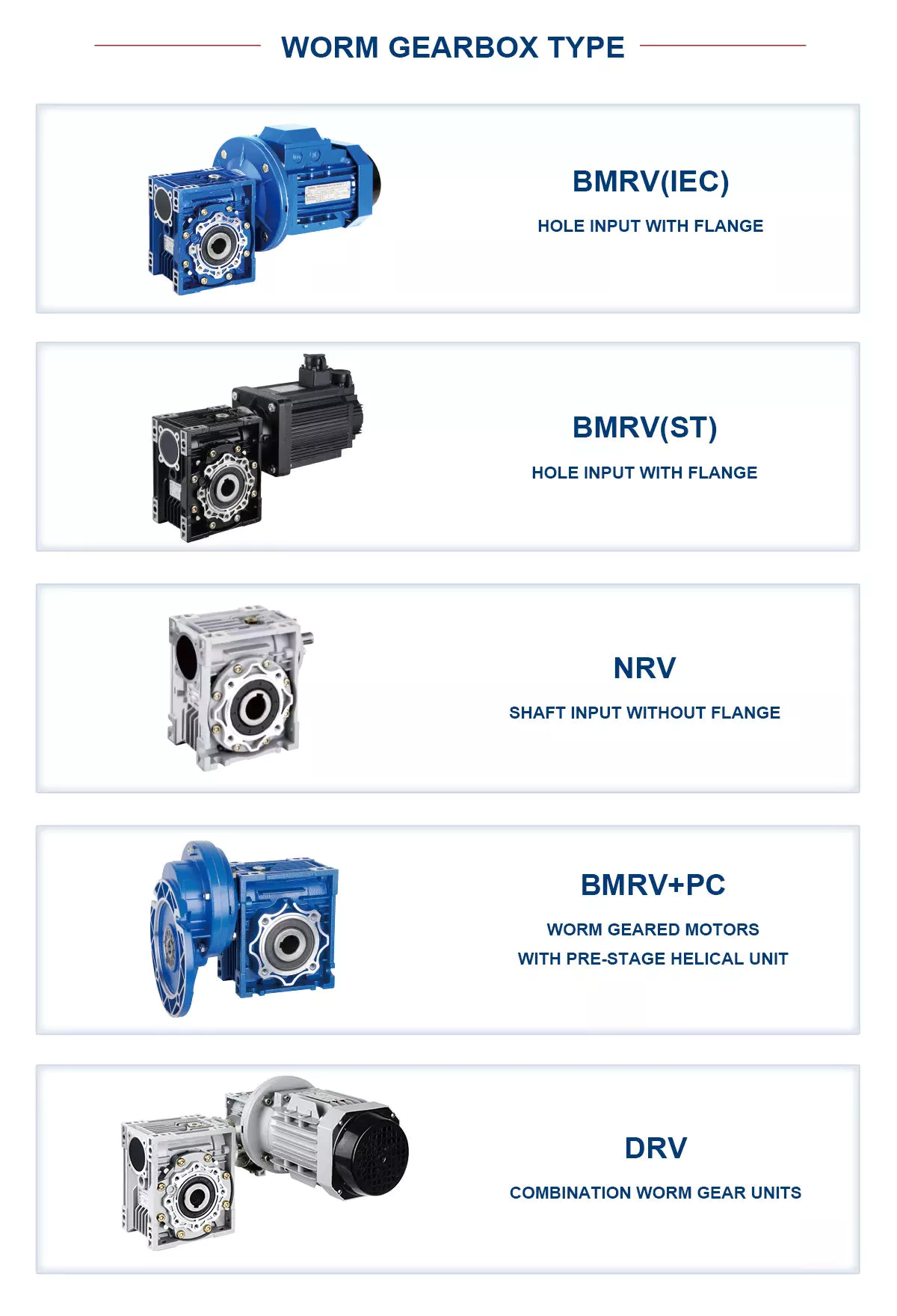
Bzvacklash
The main function of a gearhead is to multiply a moment of force and create a mechanical advantage. However, backlash can cause a variety of issues for the system, including impaired positioning accuracy and lowered overall performance. A zero backlash gearbox can eliminate motion losses caused by backlash and improve overall system performance. Here are some common problems associated with backlash in gearheads and how to fix them. After you understand how to fix gearbox backlash, you’ll be able to design a machine that meets your requirements.
To reduce gearbox backlash, many designers try to decrease the center distance of the gears. This eliminates space for lubrication and promotes excessive tooth mesh, which leads to premature mesh failure. To minimize gearbox backlash, a gear manufacturer may separate the two parts of the gear and adjust the mesh center distance between them. To do this, rotate one gear with respect to the fixed gear, while adjusting the other gear’s effective tooth thickness.
Several manufacturing processes may introduce errors, and reducing tooth thickness will minimize this error. Gears with bevel teeth are a prime example of this. This type of gear features a small number of teeth in comparison to its mating gear. In addition to reducing tooth thickness, bevel gears also reduce backlash. While bevel gears have fewer teeth than their mating gear, all of their backlash allowance is applied to the larger gear.
A gear’s backlash can affect the efficiency of a gearbox. In an ideal gear, the backlash is zero. But if there is too much, backlash can cause damage to the gears and cause it to malfunction. Therefore, the goal of gearbox backlash is to minimize this problem. However, this may require the use of a micrometer. To determine how much gearbox backlash you need, you can use a dial gauge or feeler gauge.
If you’ve been looking for a way to reduce backlash, a gearbox’s backlash may be the answer. However, backlash is not a revolt against the manufacturer. It is an error in motion that occurs naturally in gear systems that change direction. If it is left unaccounted for, it can lead to major gear degradation and even compromise the entire system. In this article, we’ll explain how backlash affects gears and how it affects the performance of a gearbox.
Design
The design of gearboxes consists of a variety of factors, including the type of material used, power requirements, speed and reduction ratio, and the application for which the unit is intended. The process of designing a gearbox usually begins with a description of the machine or gearbox and its intended use. Other key parameters to consider during gearbox design include the size and weight of the gear, its overall gear ratio and number of reductions, as well as the lubrication methods used.
During the design process, the customer and supplier will participate in various design reviews. These include concept or initial design review, manufacturing design validation, critical design review, and final design review. The customer may also initiate the process by initiating a DFMEA. After receiving the initial design approval, the design will go through several iterations before the finalized design is frozen. In some cases, the customer will require a DFMEA of the gearbox.
The speed increaser gearboxes also require special design considerations. These gearboxes typically operate at high speeds, causing problems with gear dynamics. Furthermore, the high speeds of the unit increase frictional and drag forces. A proper design of this component should minimize the effect of these forces. To solve these problems, a gearbox should incorporate a brake system. In some cases, an external force may also increase frictional forces.
Various types of gear arrangements are used in gearboxes. The design of the teeth of the gears plays a significant role in defining the type of gear arrangement in the gearbox. Spur gear is an example of a gear arrangement, which has teeth that run parallel to the axis of rotation. These gears offer high gear ratios and are often used in multiple stages. So, it is possible to create a gearbox that meets the needs of your application.
The design of gearboxes is the most complex process in the engineering process. These complex devices are made of multiple types of gears and are mounted on shafts. They are supported by rolling element bearings and are used for a variety of applications. In general, a gearbox is used to reduce speed and torque and change direction. Gearboxes are commonly used in motor vehicles, but can also be found in pedal bicycles and fixed machines.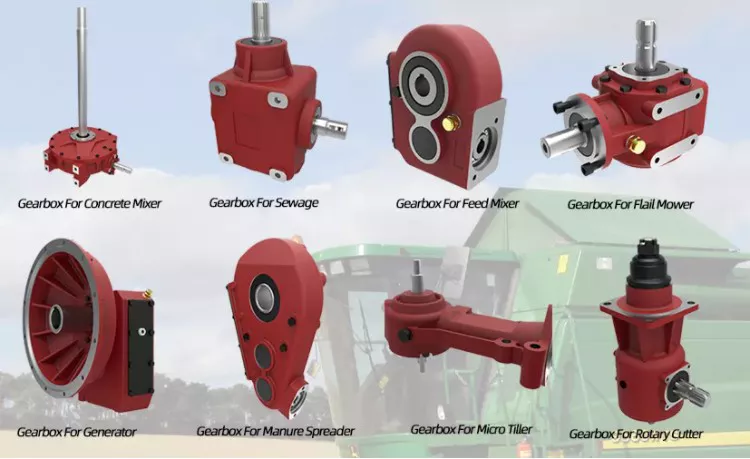
Manufacturers
There are several major segments in the gearbox market, including industrial, mining, and automotive. Gearbox manufacturers are required to understand the application and user industries to design a gearbox that meets their specific requirements. Basic knowledge of metallurgy is necessary. Multinational companies also provide gearbox solutions for the power generation industry, shipping industry, and automotive industries. To make their products more competitive, they need to focus on product innovation, geographical expansion, and customer retention.
The CZPT Group started as a small company in 1976. Since then, it has become a global reference in mechanical transmissions. Its production range includes gears, reduction gearboxes, and geared motors. The company was the first in Italy to achieve ISO certification, and it continues to grow into one of the world’s leading manufacturers of production gearboxes. As the industry evolves, CZPT focuses on research and development to create better products.
The agriculture industry uses gearboxes to implement a variety of processes. They are used in tractors, pumps, and agricultural machinery. The automotive industry uses gears in automobiles, but they are also found in mining and tea processing machinery. Industrial gearboxes also play an important role in feed and speed drives. The gearbox industry has a diverse portfolio of manufacturers and suppliers. Here are some examples of gearboxes:
Gearboxes are complex pieces of equipment. They must be used properly to optimize efficiency and extend their lifespan. Manufacturers employ advanced technology and strict quality control processes to ensure their products meet the highest standards. In addition to manufacturing precision and reliability, gearbox manufacturers ensure that their products are safe for use in the production of industrial machinery. They are also used in office machines and medical equipment. However, the automotive gearbox market is becoming increasingly competitive.

